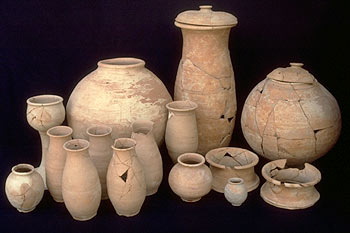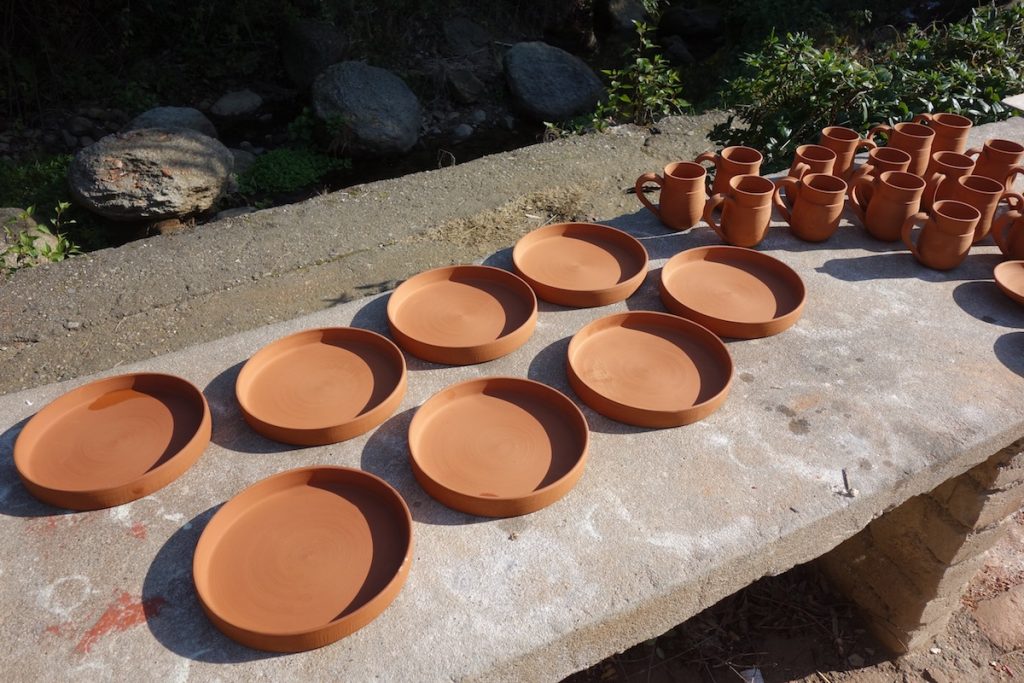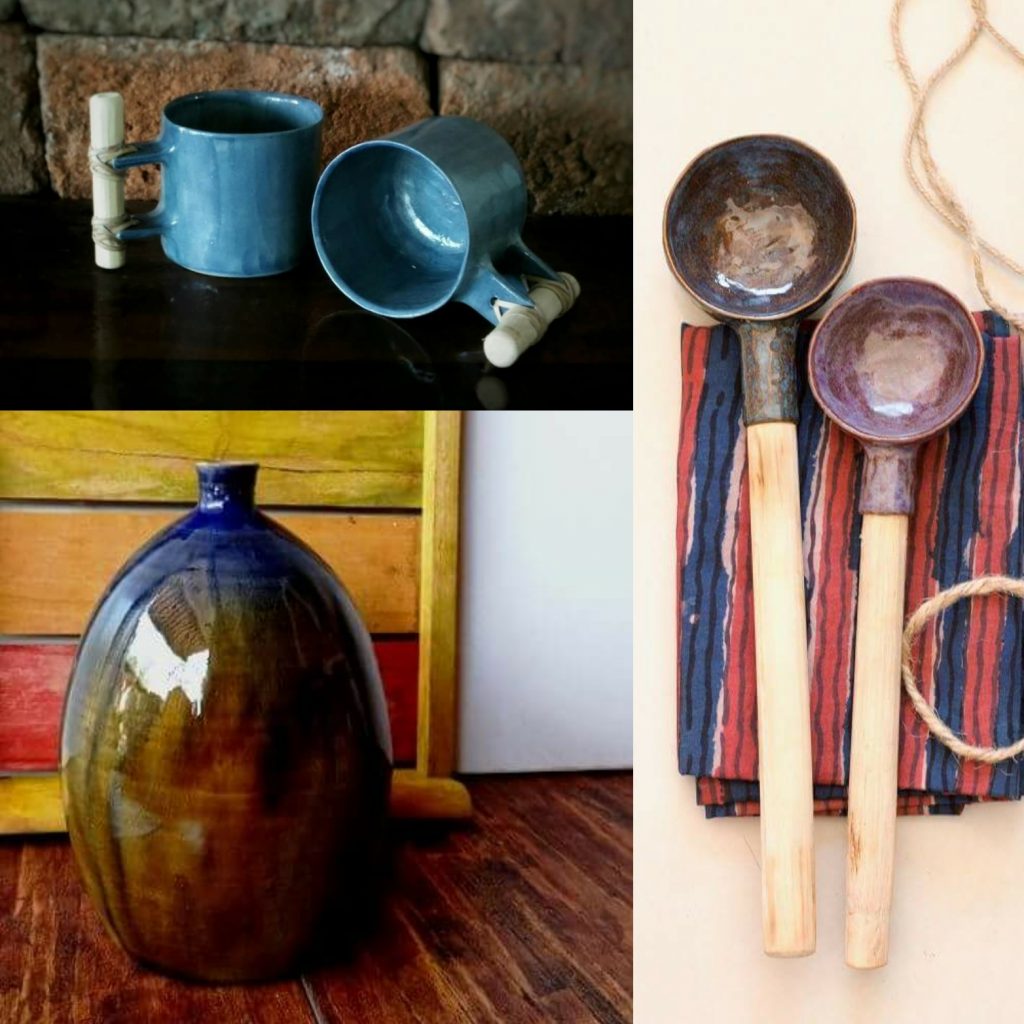The ancient craft of pottery is a mirror to our civilisation. As a medium through which humans have expressed their skills, creativity and emotions – pottery has been one of the most beautiful forms of expression. Highly tactile in nature and one could say – almost sensual, the process of hand crafting pottery is one which continues to entice and enchant those who have discovered its charms.
Pottery in India – has an ancient history and is one of the most iconic representatives of her art and craft. The origin of pottery in India can be traced back to the Neolithic age, with rough handmade pottery – bowls, jars, vessels were crafted in various colours such as red, orange, brown, black and cream. The documented origins of pottery go back to the Indus Valley Civilisation – where the potter created pots for storage of water and grains by shaping and baking clay.

Decorated pottery is believed to have become significant in the Shunga, Kushan and Gupta periods. The phase of glazed pottery started in the 12th century AD, when Turkic Muslim rulers encouraged potters from Persia, Central Asia and elsewhere to settle in present-day Northern India.Holding an important position in society – a potter would create earthenware seals, pots and containers using a wheel, mostly functional in nature and fire them in a rectangular ‘oven’ in black and red colours.
Over time India’s simple style of molding clay evolved to include unglazed pottery, glazed pottery, terracotta, and papier-mache.
The finest pottery in India is believed to be of the unglazed variety. Different regions have their own techniques , designs, colours , textures, styles and finishes. Kangra for instance is known for its black pottery, Jhajjar for slender necked ‘surahis ‘ and Kutch is known for pots and animal figures.
Glazed pottery with its white background and blue and green designs – is made in Delhi, Jaipur, Khurja, Chunar, Amritsar. Terracotta pottery abounds in rural areas of Gujarat, Rajasthan, Tamil Nadu, Bihar and Bengal – where figures of animals, gods and goddesses are also created in sync with cultural and religious tradition.
Although the technique was invented in China – the craft of papier mache was adopted by Indian craftsmen under the Mughal rule during the 15th and 16th centuries. Crafted using a base of mashed paper, copper sulfate and rice flour paste which is shaped and dried, outlined designs are painted in bright colours followed by lacquer and polish for a glossy finish in the creation of papier mache pottery.
While a traditional potter mostly works with terracotta, in today’s times we have seen the craft of pottery evolve to include the concept of studio pottery crafted by trained artistic potters who use both stoneware and porcelain for their creations.

Creativity is best expressed as it shines through the imagination of an artistic potter and is executed carefully and painstakingly under their trained hands. A lot of studio potters or artistic potters are not original students of pottery – but have left lucrative and different professions such as banking and hospitality to train themselves with the country’s best known names – all because of their passion for the craft of pottery.
Coming from different backgrounds and united by their love for clay these self-taught artists have honed their skills at Delhi Blue Pottery Trust with the legendary Devi Prasad – a Gandhian with his roots in Shantiniketan, at Andretta Pottery in Himachal under the tutelage of Mansimran ( Mini ) Singh and with Ray Meeker and Deborah Smith’s Golden Bridge Pottery in Auroville.

There is something magical about a piece of handmade pottery. No matter how many fancy branded pieces of serveware and crockery one may possess – there is something exquisitely beautiful about a piece of hand-crafted pottery.
Whether brightly colored, misshapen or perfectly round, pottery has been given an all-new modern makeover by the latest generation of creative potters and ceramicists who are passionate about this individual form of artistry. The trend towards affordable luxury, towards a handcrafted aesthetic – is driving creators. And consumers – for add-ons and a revamp of their crockery and serveware.
At World Art Community – we’re proud to present curated selections of pottery in earthenware , porcelain and stone ware from our artistic partners
Shop the collection here https://www.worldartcommunity.com/pottery/
